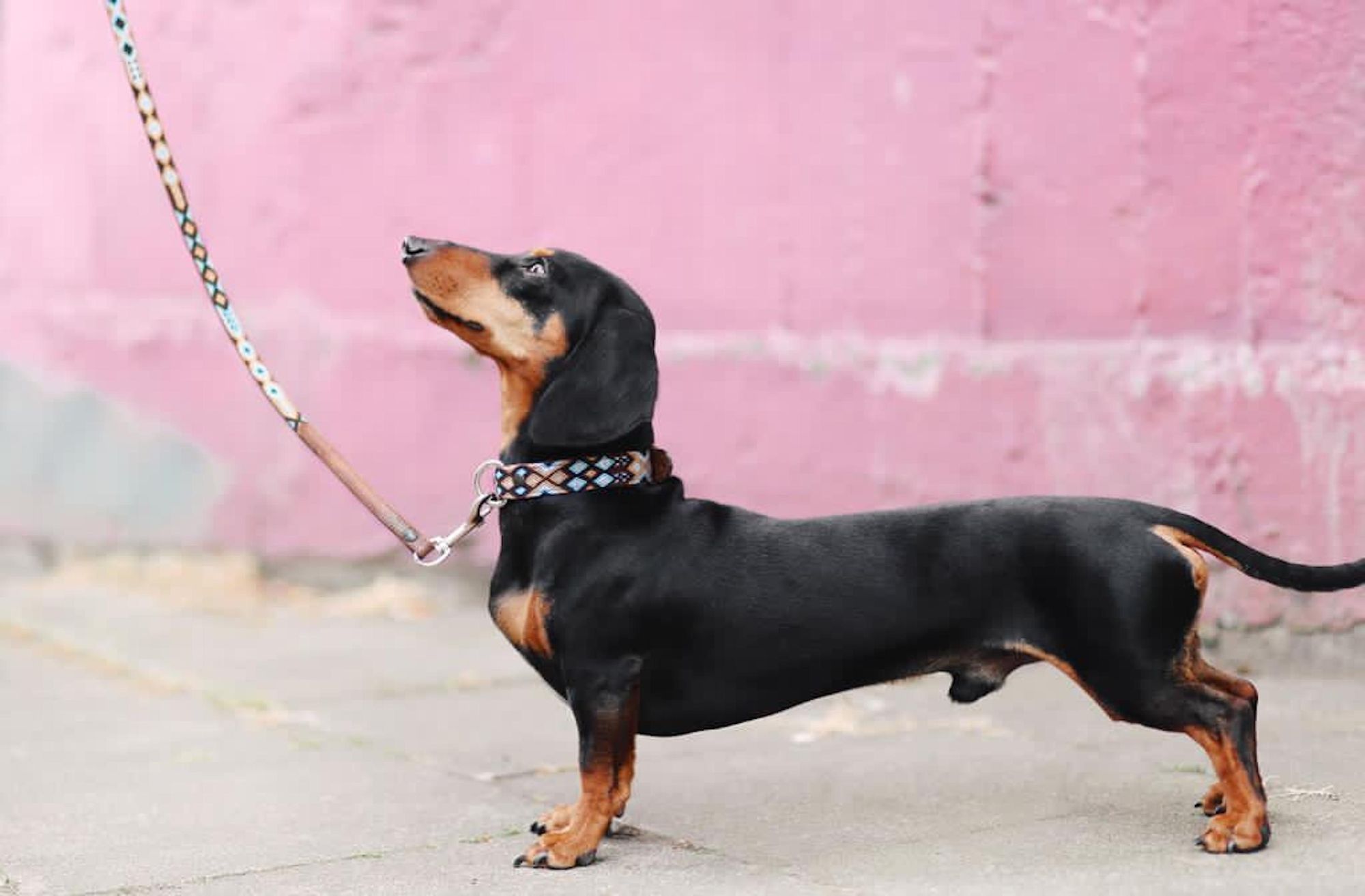At some point or another, most dogs will decide they don’t want to walk. This can be frustrating and confusing if you don’t know what to do. To help you manage your dog walks, this article will explain:
- Why dogs refuse to walk
- What to do if your dog refuses to walk
- Frequently asked questions about walking a dog that doesn’t want to walk
Reasons why dogs refuse to walk
There are a number of reasons your dog may refuse to walk:
- Your dog is injured or in pain. Your dog may suddenly not want to walk because they’re injured or are in pain. If you think your dog might be injured or in pain, have them examined by a veterinarian.
- Your dog is afraid or overwhelmed. It’s not uncommon for young dogs, adopted dogs, or dogs that have recently moved to a new neighborhood, to be afraid, unsure or overwhelmed by their new environment.
- Your dog doesn’t have a lot of experience walking on a leash. Not all dogs have experience on leash. This is particularly true for puppies and adopted dogs who may not have had the opportunity to walk on leash before.
- Your dog doesn’t like the weather. Just like people, the weather affects dogs. Depending on your dog, if it’s too hot, cold or rainy, they may not want to walk.
- Your dog doesn’t like the walking route you’ve chosen. Dogs have preferences and, if your dog stops walking mid-walk, they may not like the route you’ve chosen and are stopping in protest!
- Your dog doesn’t want to go home. Walking and exploring the outdoors is fun, and some dogs just don’t want the fun to stop! In this case, they’re stopping to try and prolong walk time.
- Your dog is tired or just doesn’t feel like going for a walk. If your dog is excessively panting, walking slower than usual, or showing other signs of fatigue (e.g. laying down) they are probably too tired for a walk. Fatigue can be caused by walks that are too long, too frequent, or features that are challenging for your dog (such as going uphill).
What to do if your dog refuses to walk?
If your dog is injured or in pain…
Call your veterinarian.
If your dog is afraid or overwhelmed…
You need to take things slowly and reward them for small successes in their leashed journey. To do this:
- Determine their boundary. Determine how far your dog can walk from the house without feeling afraid / resistant. If that's 10 feet at this point, that's OK.
- Reward heavily while walking them to their boundary. Whether this means squeaking their toy the whole way, giving them their favorite treat or lots of butt-scratches, anything they find rewarding will work. Using this positive reinforcement tactic will help your dog develop a good association with walking.
- Turn around before they get tense. We want your dog to trust that you won't push them beyond what they’re comfortable with. This will help ensure that the good feelings they’re establishing in step 2 will continue.
- Lots of little walks. The more often they can go on little walks, where they’re feeling good, the more comfortable they will become. The key, again, is only to walk as long as they’re happy and comfortable.
- Expand the boundary over time. As your dog is feeling better leashed walking, you can expand the boundary (i.e. the distance you walk). Never push them past their comfort zone; you need to move at their pace.
- Walk at quiet times of the day. Walking when the streets are less crowded will minimize the things that can stress your dog out while on a walk. Early morning or later in the evening are great options.Be patient. Changes won't happen overnight, but if you stay patient and work at your dog's speed, you'll see improvements!

If your dog doesn’t have a lot of experience walking on leash…
Introduce your dog to their equipment and leash walking slowly. To do this:
- Always offer food/treats WHILE putting on the leash/collar. Not just before or after, but during the process. This will help your dog associate delicious rewards with the leash/collar.
- Put the leash/collar on/off multiple times a day and not just when going out. This will build up the number of times your dog interacts with the leash/collar and begin to shift their comfort level faster.
- Use positive reinforcement and reward regularly while on walks. Become a periodic dispenser of good things. You don’t have to reward them for walking well. Instead, simply give them treats (like small pieces of lamb lung) throughout the walk. This will help them associate walking on leash with awesome things, like treats!
If your dog doesn’t like the weather
Depending on the weather, there are a few different actions you can take:
- Hot weather. Try a cooling vest to keep your dog’s temperature down. We like this Canada Pooch Tie Dye number.
- Cold weather. Grab an insulated coat to keep your dog warm on walks.
- Rain. Pick up a raincoat to keep your dog dry and comfortable.
- Hot cement or salty streets. Booties are a great option to protect your dog’s feet.
If your dog doesn’t want to go home…
Make coming home extra awesome! You can do this by giving your dog a work-to-eat toy as soon as you walk in the door. This will help them build a positive association with coming home after a walk, and reduce the likelihood that they stop walking on the way home. Work-to-eat toys we love include the Fun feeder, KONG classic toy, and the Toppl.
If your dog is too tired…
Take them home and spend some time understanding whether you’re walking them too far, too often, on a route that’s too challenging or if they were just having an “off” day. From there, adjust your walking routine accordingly.
Why is my dog not walking all of a sudden?
If your dog is not walking all of a sudden, there is a chance your dog is sick or injured, and you should consult your veterinarian.
Why does my dog want to stop in the middle of a walk?
There are many reasons your dog might stop in the middle of a walk:
- Your dog is afraid or overwhelmed
- Your dog doesn’t have a lot of experience walking on a leash
- Your dog doesn’t like the weather
- Your dog doesn’t like the walking route you’ve chosen
- Your dog doesn’t want to go home
- Your dog is tired or just doesn’t feel like going for a walk
Paying attention to external factors such as the weather and noise levels, as well as your dog’s body language, will help you determine exactly why your dog is stopping.
Should I give my dog treats on walks?
Yes! Outside, you are probably less interesting to your dog than everything else around you. You can build up your interest-factor by using positive reinforcement. To do this, become a periodic dispenser of good things. You don’t even have to reward them for walking well. Instead, simply give them treats (like small pieces of lamb lung) throughout the walk. This will keep them focused on you and help them develop a good association with walking on leash.




